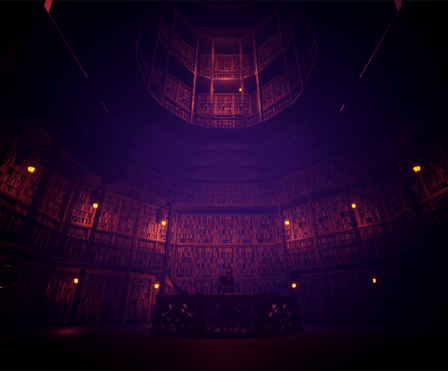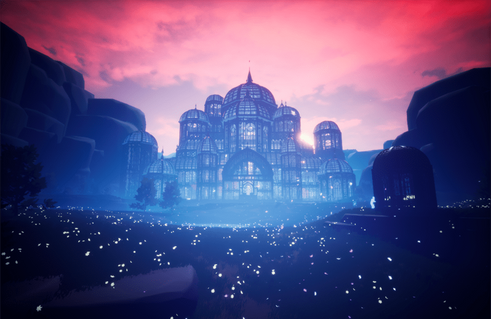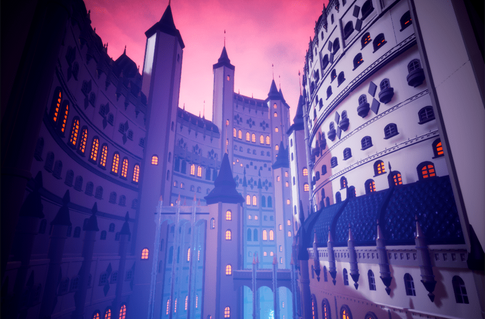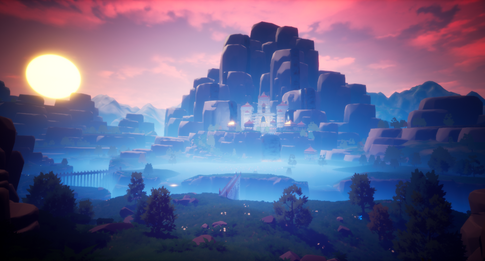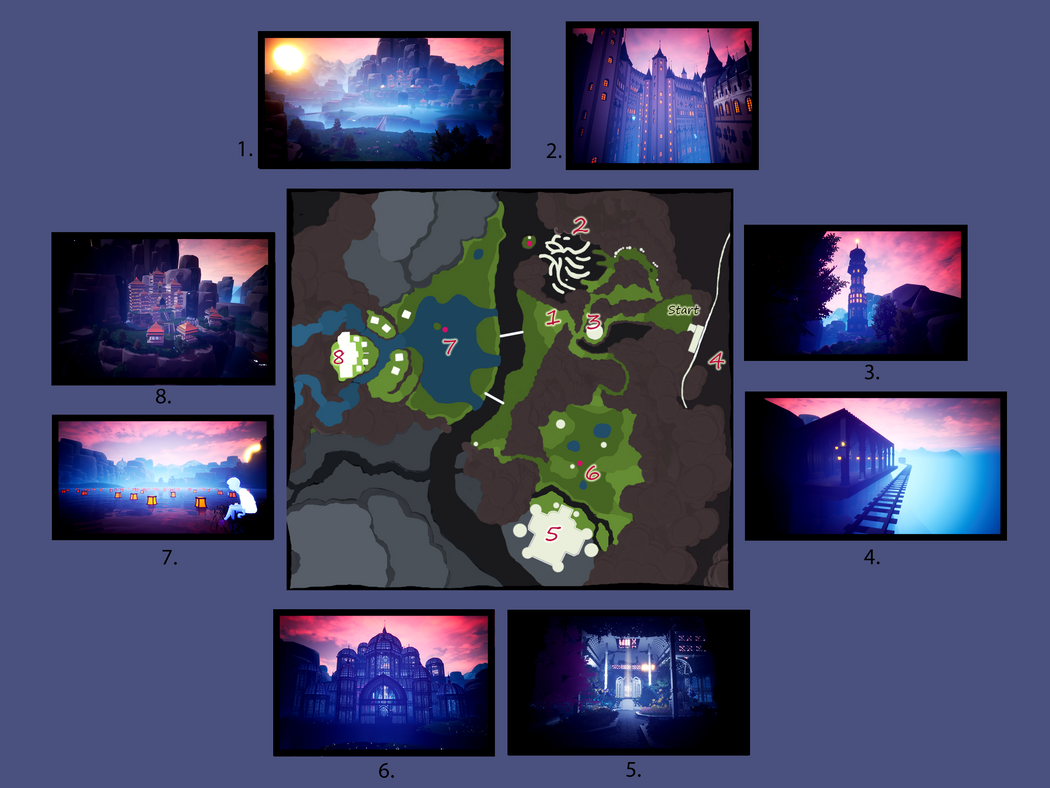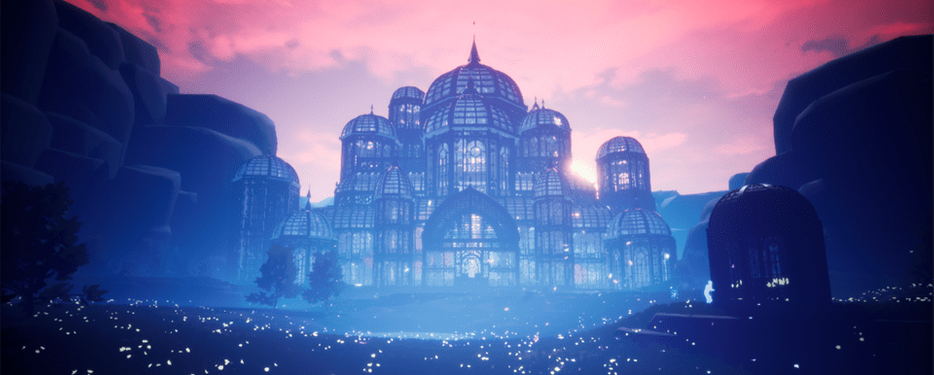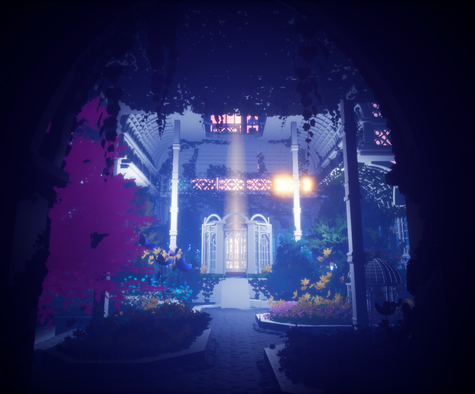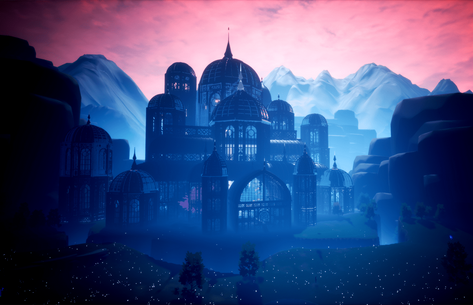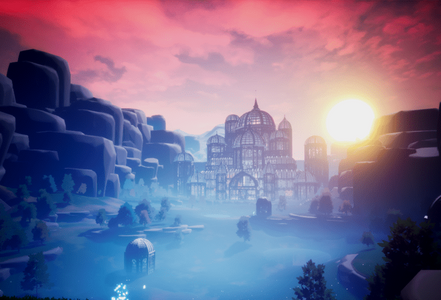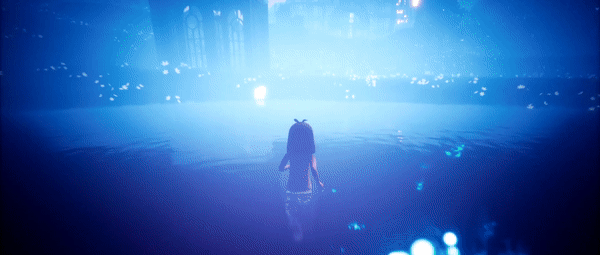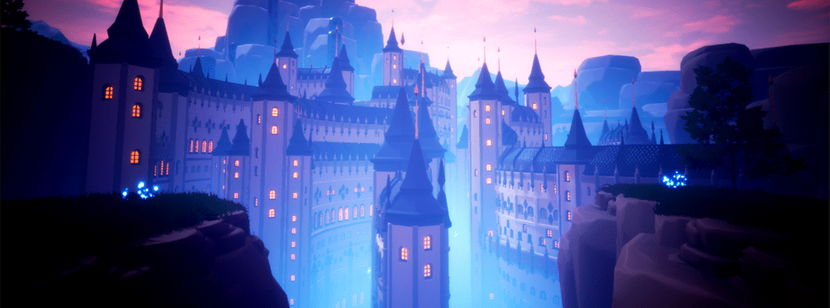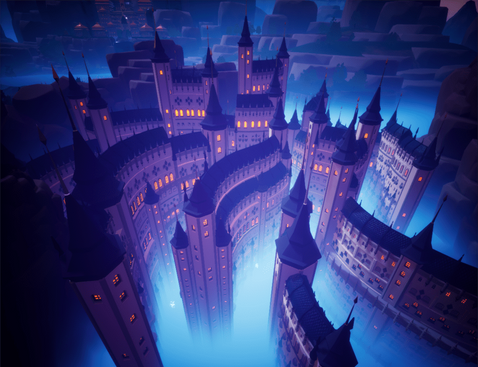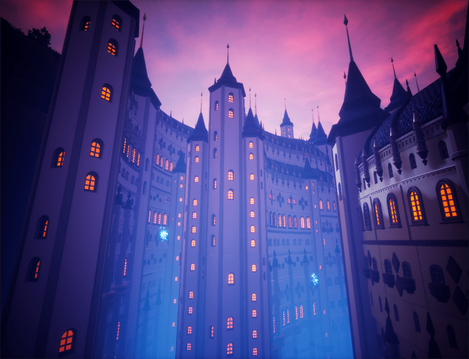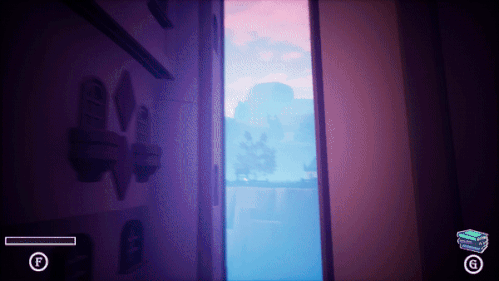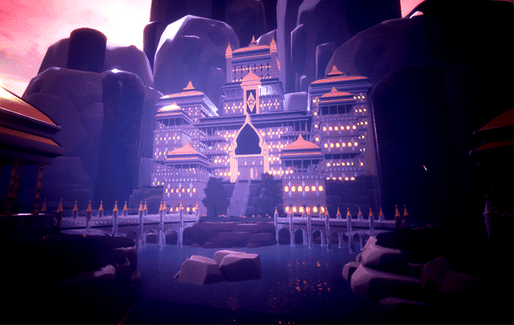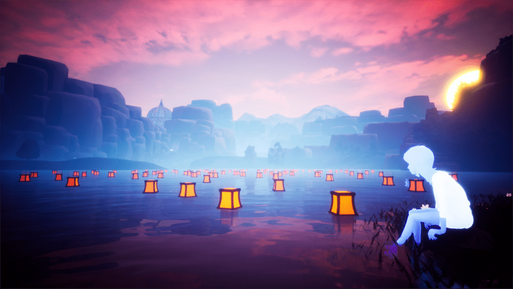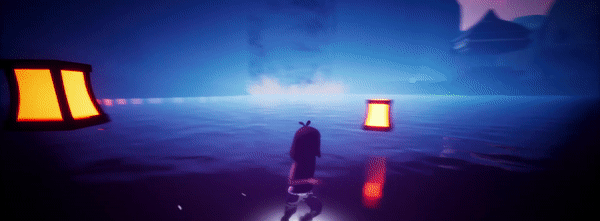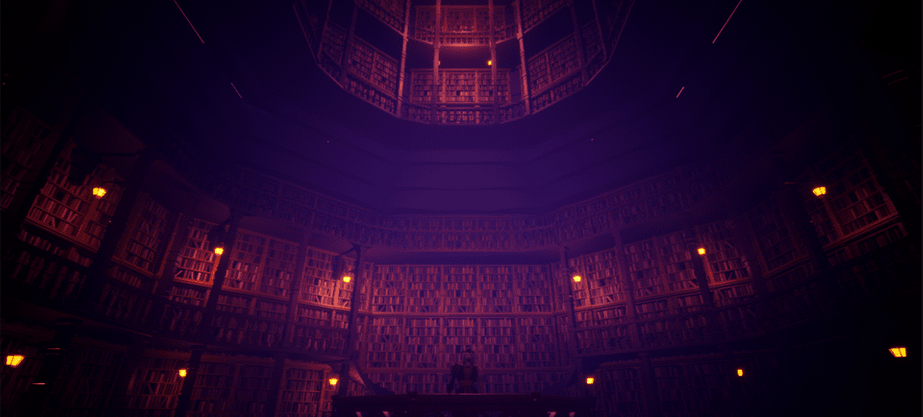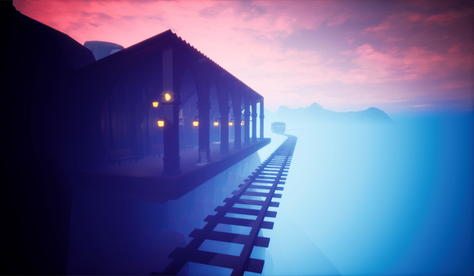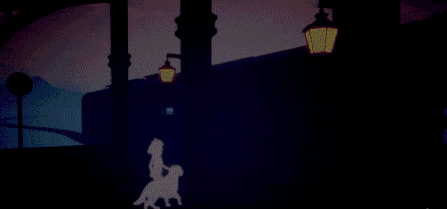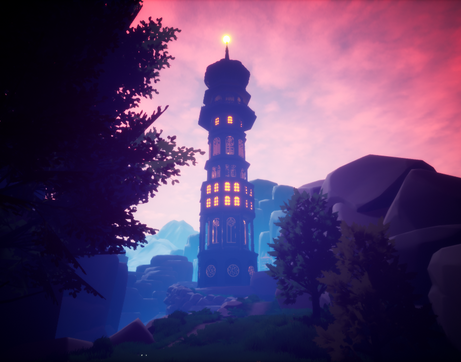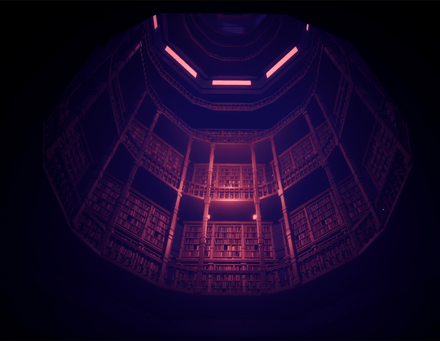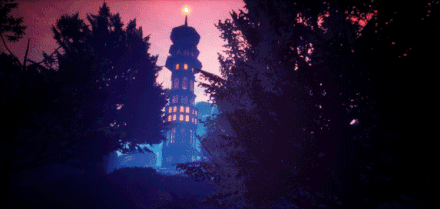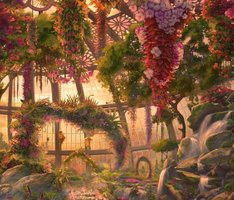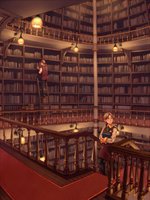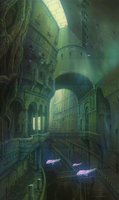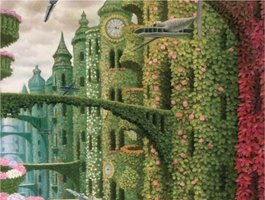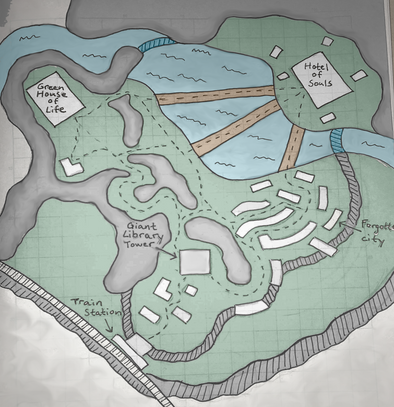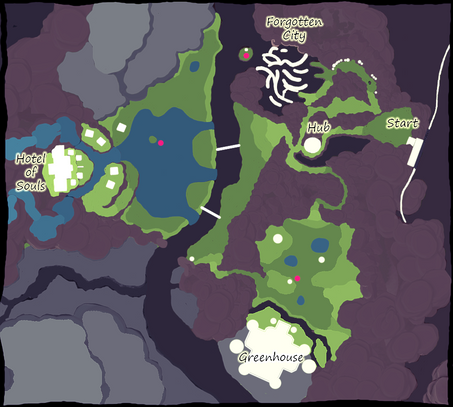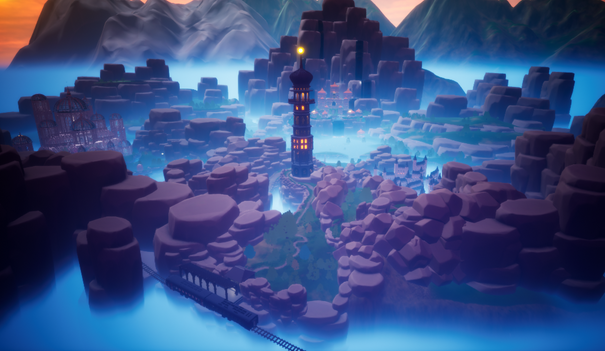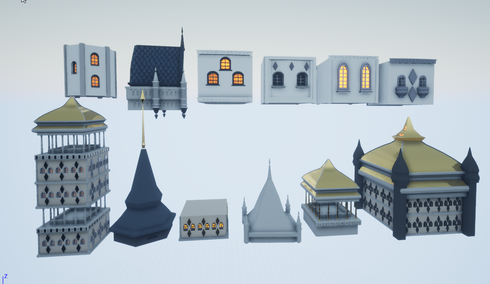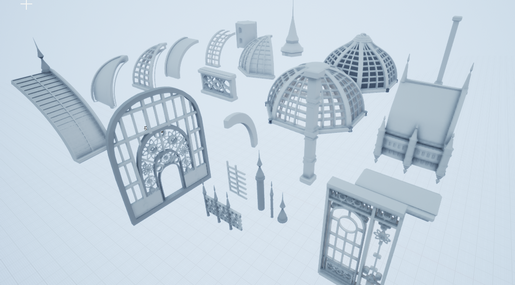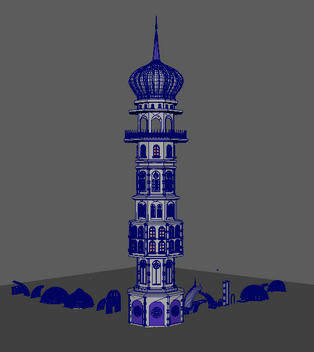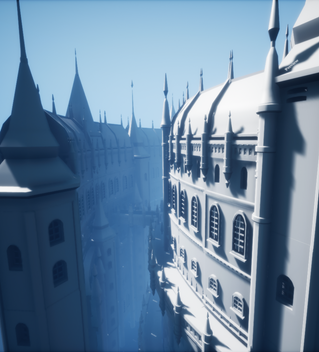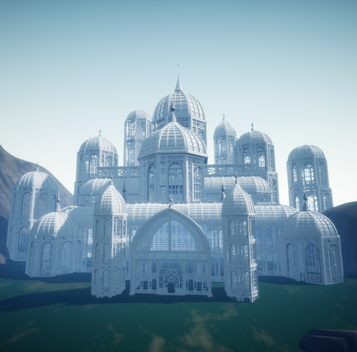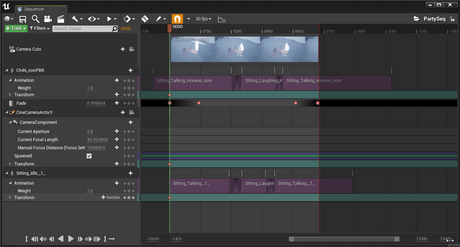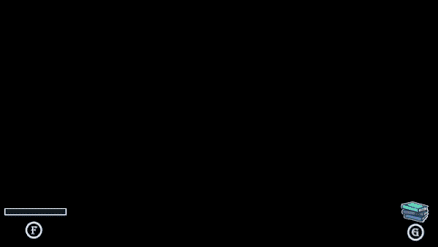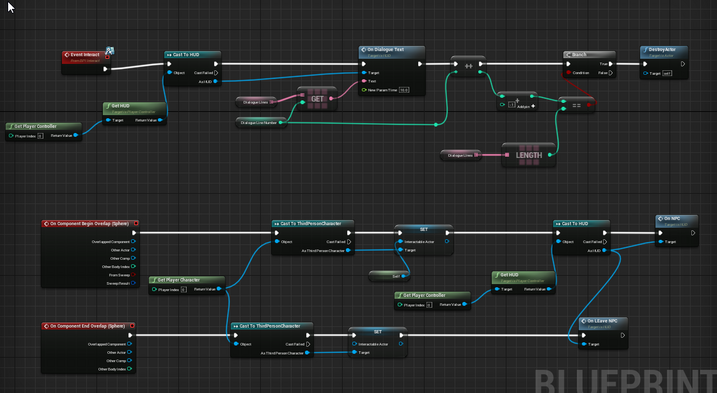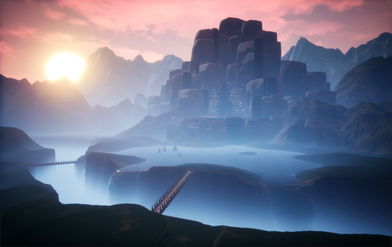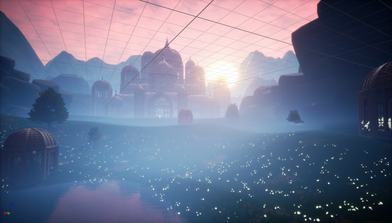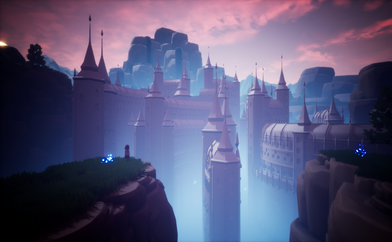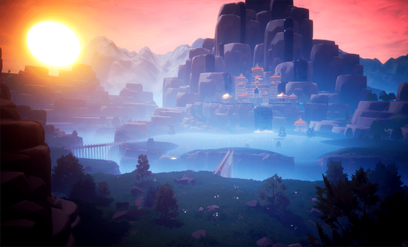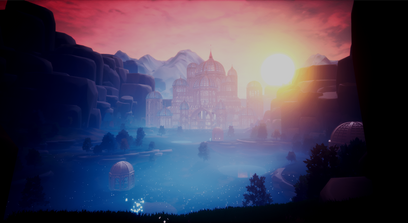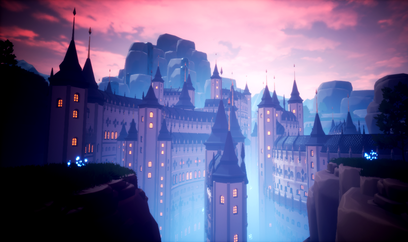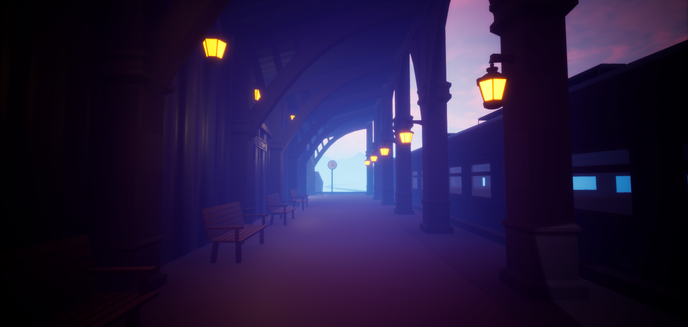DEPARTURE
THE MAIN IDEA
Departure is a story driven open world level. As the player you arrive at an empty train station in a strange magical world, with little memory of who you are and where you came from. While exploring this world, you may eventually come to realize that you are at a stopover between the world of the living and the world of the dead. The residents of this world are lost souls who are no longer alive, but still unable to pass on.
In the middle of this limbo world exists a giant library, containing a book for every person there is. You find out that three of these books are missing their final page. It is up to you to find the lost souls who's pages have disappeared, and help them finish their life story. Only then will they be able to continue on to their final destination. And since you too have arrived in this world, there may be something unfinished in your life story as well...
DESIGN PHILOSOPHY
In this project I wanted to create a level that feels complete and interesting from start to finish, and to create a world which is always exciting to explore.
I used juxtapose or strong contrast between areas to keep the player on their toes and to keep the world feeling engaging. A cramped ravine passage leading to a wide open field, a big flat lake next to a city with extreme verticality and so on.
I also wanted every area to have a purpose and be deeply connected to the story. The story mainly revolves around four different NPCs. I based each area upon the backstory of the NPC that the player would encounter at that area. This way, the entire area could become a part of the environmental storytelling.
Furthermore, I wanted to invoke a sense of wonder and largeness when walking through this world. I did this by scaling up each landmark to a scale that would normally feel just a bit extreme.
Lastly, this level is massive and involves a lot of exploring. Since it's an open world, the player can visit any area in any order they would like. I wanted to keep all paths leading somewhere interesting, and to avoid the need for any backtracking whatsoever, no matter which area the player chooses to visit first.
THE PROJECT
I wanted Departure to be a complete and fully playable level with a beautiful and lively world. While my main focus with this project was level design and level art, I also had to involve other tasks in order to achieve this goal on my own. Since this was a solo project, I needed to be solely responsible for basically every aspect of the finished experience. This included:
- Modeling almost all meshes myself (except characters and foliage)
- Designing and building the level
- Scripting all gameplay events
- Adding lighting, vfx and post process
- Combining animations and animating level sequences
- Writing dialogue and directing the story
THE GREENHOUSE
Inside the greenhouse the player must find the ingredients to make a magic elixir. This elixir is then used to make a flower grow to an enormous size, allowing the player to climb up into one of the domes of the greenhouse. Here the player finally finds the flowers that they were searching for, and they can now hand them to the old man waiting outside.
Once the flowers have been handed over to the old man, ha fades away, and the greenhouse that he was previously inpecting falls apart into pieces, exposing one of the lost pages inside.
Another challenge was the issue of flying. In this game, the player has the ability to fly after finding pickups scattered across the level. These pickups charges up a meter. Once the charge is used up, the player loses the ability to fly until finding another pickup. Flying inside the greenhouse would make the puzzle meaningless, since the player would not need to climb. To solve this, I added a steep crack in the ground surrounding the greenhouse. This forces the player to use up their flying ability to enter the greenhouse, ensuring that the player will not be able to use their flying ability inside the greenhouse.
THE GAMEPLAY
The greenhouse is located at the edge of a large meadow. Here the player meets an old man who's searching for flowers for his wife, with whom he used to have a beautiful garden. The wife is already dead since long, and her husband is worried that her favorite type of flower doesn't grow in the kingdom of death. He refuses to move onto the other side unless he can bring them with him.
The old man tells the player about his problem. Now the player must find the flowers to help the man finish his life story and thus find one of the missing pages.
THE DESIGN
In this part I wanted to invoke a sense of vastness and make the player feel small in this new strange world, so I scaled up the area quite a bit. To avoid the first part of the meadow feeling too eventless, I added a scripted event where the player encounters a spirit dog that leads the player forward to the old man NPC further ahead.
One main challenge of this part was making the flower puzzle intuitive to the player, and to make sure that the problem was introduced before the solution. I tried to solve this problem by very clearly highlighting the pot of the flower that is later going to be used to climb. I also used a light ray to highlight that there is a hole in the ceiling above.
THE FORGOTTEN CITY
THE GAMEPLAY
The forgotten city is a city without streets, straight lines or corners, where the houses just continue down into the abyss. Here, the player must use their flying ability in order to cross.
The flying ability is charged whenever the player comes in contact with a flying pickup. The charge quickly goes away while being used, causing the player to have to continuously pass through pickups on their way through the city to avoid falling down into the abyss. This makes for a fun minigame while traveling toward the main goal.
THE DESIGN
I wanted the city to feel somehow aerodynamic in it's layout, so that the player feels almost like they're a part of the wind that's flowing through the city as they fly through it. The flow through the city should feel smooth while still being challenging.
I wanted to create a strong contrast from flying through the extremely dense city to then suddently finding yourself on an isolated island in the middle of the empty abyss. This invokes an even lonelier feeling at the empty island. I also wanted this environment to symbolize the character of the lost soul NPC, the lonely boy who has always felt isolated from everyone else.
Each street in the city eventually funnels the player into one bottleneck area. Then, immediately after passing through the extremely densely populated city, the player gets a reveal of the place where one of the lost souls reside. He is a very lonely person who has always felt isolated from other people. He feels no need to board the train to the kingdom of death, since he believes there is no one waiting for him on the other side. While in this limbo world he yearns to make at least one friend before he can accept that his life has come to an end.
By collecting snacks and drinks and setting up a birtday party for the boy, you manage to befriend him. With the agreement that you will meet once again at the next station, the boy finally decides to pass on, and his missing page appears.
THE HOTEL OF SOULS
The Hotel of Souls is a hotel and bath house up on a mountain overlooking a large lake. Passing through the lake on the way to the hotel, the player can encounter a young woman sitting on a small island surrounded by lanterns.
The woman is trying to send a message to someone in the world of the living. A confession that she was always too afraid to say while alive. As she explains, these lanterns are one thing that is able to travel across these two worlds. However, she has never been able to make any of the lanterns fly.
After traveling up the mountain, the player ecounters a series of empty baths. Next to each bath is a pillar with a large keyhole. Then, after entering the hotel lobby, the player can find four different colored keys hanging on the wall. Using these keys will cause the baths to fill up.
Each of the filled baths has a different effect on the player upon entering. The blue bath fills up the player's flying ability bar. The purple bath depletes it. The black bath slowes down the player's movements for 20 seconds. Finally, there is the emissive white bath, which gives the player the ability to make other objects fly.
After entering the glowing white bath, the player has one minute to make all of the lanterns in the lake fly, before the ability runs out. Upon completing this challenge, the young woman will pass on knowing that her message has been sent forward, and her final page will be found next to where she once sat.
THE LIBRARY
THE GAMEPLAY
The library is the most important landmark of the level. This is also the first landmark the player arrives at, soon after leaving the train station at the beginning.
It is here that the player meets the first NPC, the librarian. The librarian gives the player their main mission: find the missing pages and return them to the library. In exchange for this, the player will eventually be allowed to read the book containing their own life story, the librarian promises. The player can then head out in the world on the quest to help the lost souls finish their life stories and to find the missing pages of their books.
Toward the end of the game, the player returnes to the library having found all three pages. This is when the player recieves their own book and realizes that it, too, has a missing page. In their own book the player can finally read their own story.
THE DESIGN
The library acts sort of like a hub, connecting all the different areas of the level. I wanted this library to be visible from almost any place in the world, as a way to help the player orient themselves more easily and to make it easier for them to find their way back to the hub area when needed. Therefore, the tower had to be very tall and easily recognizable. I also decided to place it on top of an elevated area at a central part of the level.
Furthermore, I wanted the player to be able to get a very slight peak at each major landmark in the level from this hub area. Not enough to see exactly what it is, but just enough to spark curiosity and to reveal that there is something to be discovered in that direction.
In their story they can read all about their life, their family and their friendships. Particularly, about the dog who the little girl used to have while she was younger, and who was her very best friend. Throughout the happy times and through illness and hardship, they always stayed side by side, until the day they were forced to say farewell. It's also a story about the struggle of being sick, and not being able to help those around you.
Having read their story, the player leaves the library for the last time, and finds the spirit animal who had been leading her through various parts of this world, waiting for her outside. It turns out to be the girl's beloved dog. As the librarian explains, the dog has been waiting for her arrival at this limbo world, not wanting to leave until they could do so together. Upon having helped the other lost souls, and having met her friend once more, all of the life stories are completed, and together they board the train toward the other side.
THE PROCESS
Deciding the Basic Layout
I started out this project with a week long pre-prod phase. During this phase I collected reference images for the theme and setting of the level. I took a lot of inspiration from studio Ghibli movies, such as Spirited Away and Laputa. I decided that I wanted there to be three distinct areas that were all connected by one central hub area.
After deciding on the main theme of the level, I started thinking about the story that I wanted to convey through the level. I wanted the story to be vowen into the level from the start, rather than something thrown in at the end of the process. After coming up with a main storyline, it was much easier to come up with ideas for the general layout of the level.
This is when I brough out the pen and started drawing up different possible layouts on paper. I iterated on my overviews many times. To the left is the first rough overview of the level, and to the right is the final overview.
Blocking Out The Level
After drawing the first overviews, I started making a rough blockout of the whole level in Unreal Engine. I started off with an extremely rough blockout, using only cubes and the landscape tool, just to get a sense of the space and distances between objects. Since this is an open world level, I wanted to focus on the macro design. So I used a very zoomed out perspective and just tried to make all the main areas of the world connect well. This also made it easy to make many iterations in the macro design before moving on to the whitebox phase.
First Rough Blockout
Final Level
Making My Own Whitebox Meshes
Since there was no ready-made asset packs that I could use to accurately convey the concepts I wanted to visualize, I needed to make almost all of the whitebox meshes on my own. While 3d modeling was definitely not the main focus or purpose of this project, it was necessary to be able to express my own visions for the level. I decided to make a simple modular mesh kit for each area in Maya.
After making the mesh kits, I quickly tried placing them all in the level, to get a sense of the scale and the look of the structures and to see if they would fit into the area in the way I had expected.
Adding Gameplay and Making Cutscenes
I wanted the level to be eventful from start to finish. To achieve this I needed to do quite a bit of scripting. I learned a lot about scripting through this experience, making over 30 different blueprints for this project. Adding scripted events and puzzles really made the level start to come alive and feel fun to explore. Adding vfx feedback to some of the actions in the game also made a big difference for the game feel.
I wanted cinematics to be a big part of this level in order to guide the player and make the level come alive even more. Since I'm not an animator and only have very basic skills in animation, I used mixamo.com to get both the characters and the base animations. I then edited the animations together into level sequencers inside of Unreal Engine, in order to create my own small cutscenes. Since the animations were not my own, sometimes used root motion and so on, tweaking them to work in the level sequencer could sometimes be quite tricky. But while the animations were not perfect, they did work well enough to represent the events that took place in the level.
Polishing the Level
The last stage of this project was polishing the environment to make the level look nicer and to give it the right atmosphere. I used foliage and rocks to add more detail to the landscape, I tweaked the lights and fog to get a more mysterious atmosphere. I also added various post process effects to achieve a nicer look. Finally I added extra props and pointlights to further help guide the player.
THINGS THAT COULD BE IMPROVED
If I had more time to work on this project, there are some things that I could work on to improve the level:
- The city area could be larger. Since flying through the city goes by quite fast, it might feel like too much is happening at once.
- I would add more gameplay, scripted events and more types of pickups, so that the player has more to do while searching for NPCs.
- I would add more side paths and alternative paths so that there is more opportunity for exploration.
- I would add a final fourth quest that the player must do to find their own missing page. As it is now, the ending is a bit abrupt.
- While the various areas of the level are very different in and of themselves, the lighting and postprocess effects are the same throughout the level, which might eventually give the player a bit of visual fatigue. I would change up the lighting and postprocess a bit more between the different areas to create even more contrast between them.
In conclusion, I am very happy with how this project turned out. It helped me grow a lot as a level designer and was extremely fun to work on. It gave me a deeper understanding of what is needed to design an open world, and this type of open world level design is something that I would love to work more with in the future.















